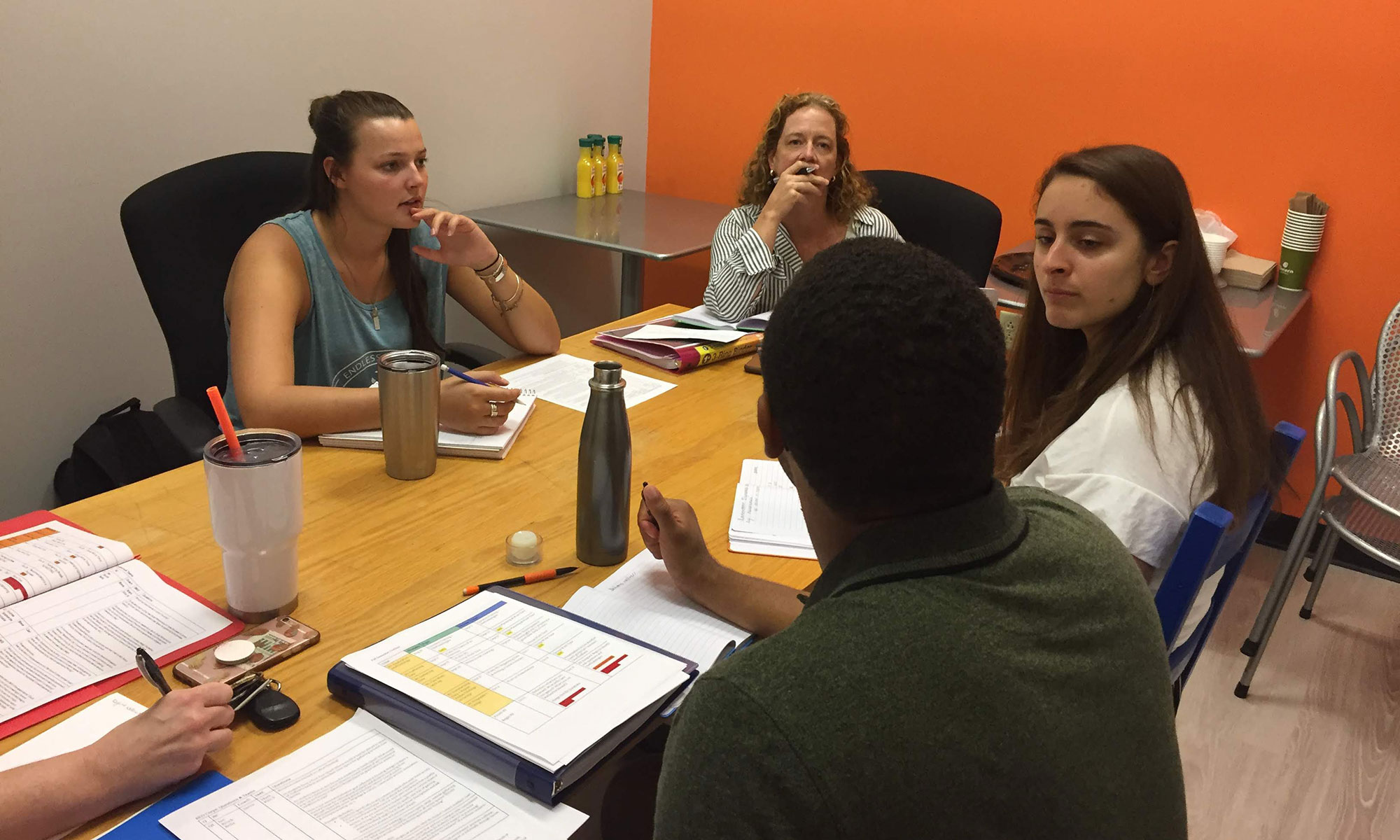Imagine traveling through the Student Union and being approached by peers flashing photos of possible designs for a wellness center — asking what matters to you. That was exactly what 必博娱乐,比博娱乐网址 ######### students experienced.
As our campus re-imagines student wellness, students are co-constructors of our approach to wellness. And as we build a stunning new wellness center, they have influence over the design. As part of their work with the Research, Engagement and Design (RED) Corps, Data Analytics major Morgan Hogenmiller ‘19 and Biology and Spanish double major Bella Kohrs ‘21 set out to understand what students might hope to see in our new wellness center, on which we’re expecting to break ground in 2020.
Kohrs shares “Students at 必博娱乐,比博娱乐网址 ######### have demonstrated interest in how to improve wellness on campus, and we aimed to gather input on how students would like to see our new Wellness Center develop as it replaces the current Wellness Center at Whisler Hall.”
Hogenmiller added, “Conversations about mental health have become prevalent nationwide, many of them specifically targeting the mental health of college campuses. Mental health is not only important on an individual level, but to the well-being of a community at large.”
Tasked with the opportunity to gain insight from their peers on the design of a new building, Kohrs and Hogenmiller asked their peers how they wanted the new wellness center to feel, what aesthetics they felt were most conducive to wellness and comfort, and finally, what amenities might help relieve stress and improve well-being on a day-to-day basis.
In order to gather student input, they implemented a few different methodologies. First, they approached students in the Slayter Student Union with a very short survey asking them to imagine what the new Wellness Center could possibly be.
When asking their second set of questions about the aesthetic preferences for the new building, they put their participants in a wellness mindset, collaborating with the staff at the Wellness Center at Whisler Hall to plan a “De-Stress Fest” with smoothies, massages and therapy dogs — all wellness resources which had been suggested in previous RED Corps-gathered research.
Kohrs and Hogenmiller posted photos of possible interior aesthetics for the new wellness center and asked fellow students what they might most appreciate in the new building, specifically collecting feedback on entrances, hangout spaces and the teaching kitchen.
They showed students various images of wellness spaces and asked peers to rank and identify which photos they most preferred, gleaning insight not only into the actual images selected but through explanations of why a particular photo resonated with them. From that exercise, they found that students preferred a softer, more natural ambiance, natural lighting, big windows, and greenery that gave a natural feeling.
Their data indicated that students wanted a novel and inviting space on campus, with peers most commonly articulating that they wanted the new Wellness Center to feel “relaxed,” “aesthetically pleasing,” and “separated from work.”
Students voiced that they did not want this new space to harbor feelings of stress, anxiety, and business. Additionally, students indicated a dislike for more modern and sterile architecture, nor did they gravitate to bold colors, white LED lighting, or austere white work spaces.
Through their research, RED Corps solicited feedback on the amenities students wanted available within the new wellness center. Students expressed interest in massages, a healthy snack bar, juice and tea bar, pets and yoga. Resources like these, as well as health promotion in general, are imperative to how we can foster a culture of wellness, rather than a place of treatment or reaction.
Hogenmiller explained this saying, “We believe that the insights we gained from this research project about feelings, aesthetics, and amenities should not and will not replace the need for counseling professionals, but rather have the potential to help students manage stress and improve their well-being on a day-to-day basis.” RED Corps shared these findings with Wellness Center staff and the design firm to infuse student voices into the creation of the center. As 必博娱乐,比博娱乐网址 ######### becomes a leader in the field of student wellness and holistic approaches to student wellness, we are proud and excited that student voice has been an integral part of our process.
Kohrs added, “Through this project, our group learned valuable lessons on the importance of mental health on 必博娱乐,比博娱乐网址 #########’s campus and how invested students are in making positive changes to the system in place. This showed us how much students care about the subject of mental and holistic health on campus, and how much they want to be informed about not only about how 必博娱乐,比博娱乐网址 ######### is strengthening this culture but also how students can be agents of change in this shifting our campus culture to create an ecosystem of wellness.”
RED Corps and the Wellness Center continue to gather input and insight from students about how they imagine our culture of wellness on campus.
